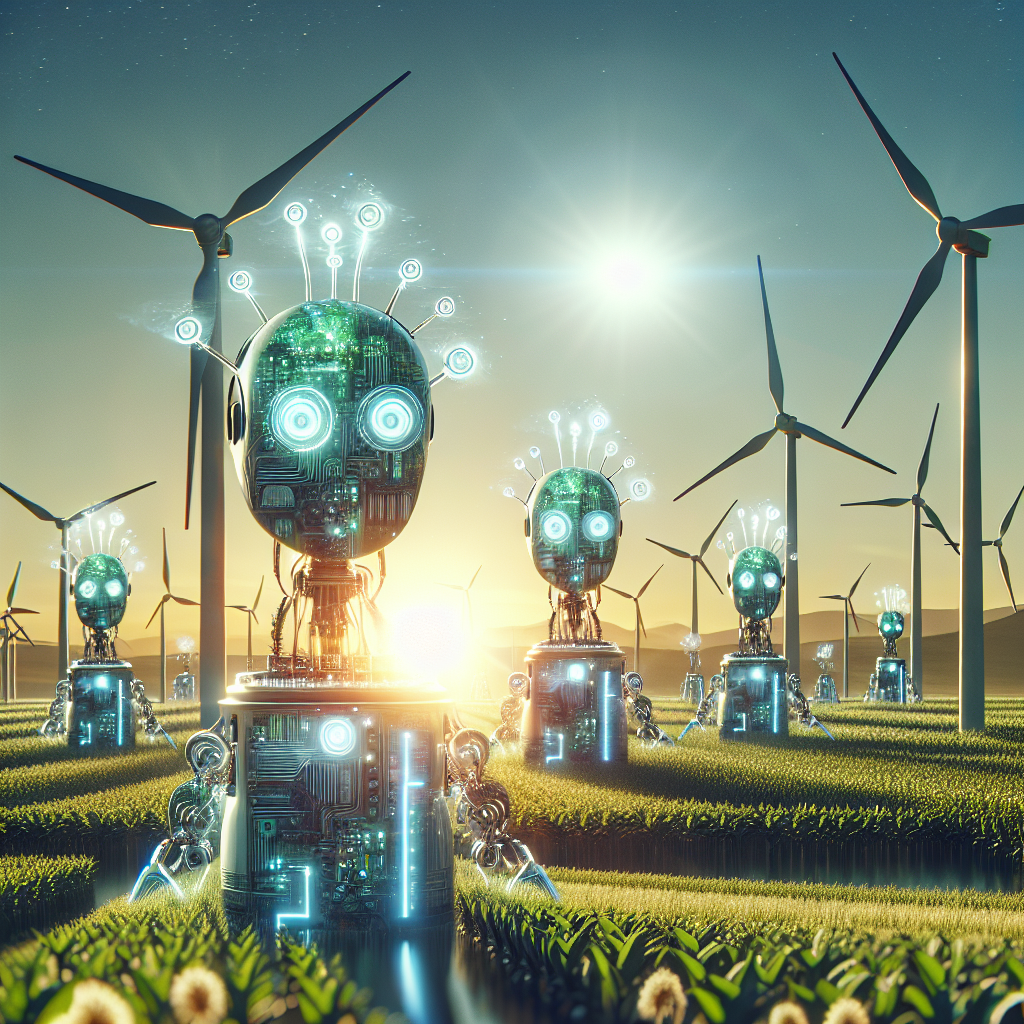Introduction
Artificial Intelligence (AI) and Machine Learning (ML) are revolutionizing the way we generate, distribute, and consume renewable energy. These technologies are enabling more efficient and sustainable energy production, helping to reduce costs and minimize environmental impact. In this article, we will explore the role of AI and ML in the future of renewable energy and discuss their potential to drive the transition to a cleaner and more sustainable energy system.
AI and ML in Renewable Energy
AI and ML technologies are being used in various ways to optimize renewable energy systems and improve their performance. One of the key applications of AI in renewable energy is predictive maintenance. By analyzing data from sensors and monitoring systems, AI algorithms can predict when equipment is likely to fail and schedule maintenance before a breakdown occurs. This helps to minimize downtime and ensure that renewable energy systems operate at peak efficiency.
ML algorithms are also being used to optimize the operation of renewable energy systems. By analyzing data on energy production, weather conditions, and electricity demand, ML algorithms can adjust the output of renewable energy sources such as solar panels and wind turbines to maximize efficiency and reduce costs. This can help to increase the overall output of renewable energy systems and make them more competitive with traditional fossil fuel-based sources of energy.
AI and ML are also being used to improve the integration of renewable energy into the grid. As the share of renewable energy in the electricity mix increases, grid operators need to be able to manage the variability and uncertainty of renewable energy sources. AI algorithms can help to forecast energy production from renewable sources and optimize the dispatch of energy to meet demand. This can help to reduce the need for expensive backup power plants and storage systems, making renewable energy more reliable and cost-effective.
In addition to optimizing the operation of renewable energy systems, AI and ML technologies are also being used to design and develop new renewable energy technologies. For example, researchers are using AI algorithms to design more efficient solar panels and wind turbines, as well as to optimize the layout of renewable energy projects. By using AI to rapidly explore and evaluate different design options, researchers can accelerate the development of new renewable energy technologies and bring them to market more quickly.
The Future of Renewable Energy
AI and ML are set to play an increasingly important role in the future of renewable energy. As the cost of renewable energy continues to decline and the adoption of renewable energy technologies continues to grow, the need for advanced technologies to optimize and manage renewable energy systems will only increase. AI and ML technologies offer the potential to drive further cost reductions, increase efficiency, and improve the reliability of renewable energy systems, making them more competitive with traditional energy sources.
One of the key challenges facing the renewable energy industry is the variability and uncertainty of renewable energy sources. Solar and wind energy are intermittent and dependent on weather conditions, which can make it difficult to predict and manage their output. AI and ML technologies can help to address these challenges by providing real-time monitoring and control of renewable energy systems, as well as by forecasting energy production and optimizing the dispatch of energy to meet demand.
Another key challenge facing the renewable energy industry is the need to integrate renewable energy into the grid. As the share of renewable energy in the electricity mix increases, grid operators need to be able to manage the variability and uncertainty of renewable energy sources, as well as to balance supply and demand in real-time. AI and ML technologies can help to optimize the operation of the grid, improve the efficiency of energy distribution, and enable the integration of renewable energy sources into the grid at scale.
Overall, the future of renewable energy looks bright, thanks in large part to the advances being made in AI and ML technologies. By harnessing the power of AI and ML to optimize and manage renewable energy systems, we can accelerate the transition to a cleaner and more sustainable energy system, reduce costs, and minimize environmental impact. The possibilities are endless, and the potential is vast. AI and ML are set to revolutionize the way we generate, distribute, and consume renewable energy, paving the way for a brighter and more sustainable future.
FAQs
Q: How are AI and ML being used in renewable energy?
A: AI and ML technologies are being used in various ways to optimize renewable energy systems and improve their performance. This includes predictive maintenance, energy production optimization, grid integration, and design and development of new renewable energy technologies.
Q: What are the benefits of using AI and ML in renewable energy?
A: The benefits of using AI and ML in renewable energy include increased efficiency, reduced costs, improved reliability, and greater scalability. These technologies can help to optimize the operation of renewable energy systems, integrate renewable energy into the grid, and accelerate the development of new renewable energy technologies.
Q: What are the challenges facing the adoption of AI and ML in renewable energy?
A: Some of the challenges facing the adoption of AI and ML in renewable energy include data availability and quality, regulatory barriers, and the need for skilled professionals. Overcoming these challenges will be key to realizing the full potential of AI and ML in renewable energy.
Q: What is the future of renewable energy with AI and ML?
A: The future of renewable energy with AI and ML looks bright, with the potential to drive further cost reductions, increase efficiency, and improve the reliability of renewable energy systems. These technologies have the potential to revolutionize the way we generate, distribute, and consume renewable energy, paving the way for a cleaner and more sustainable energy system.

